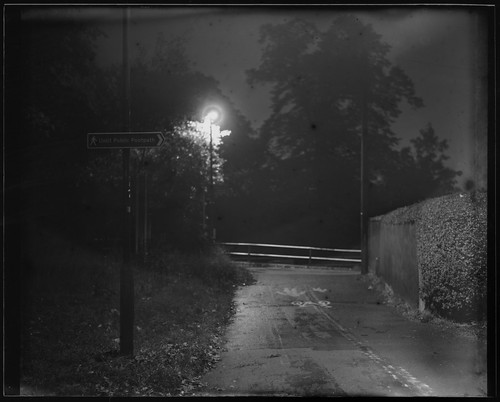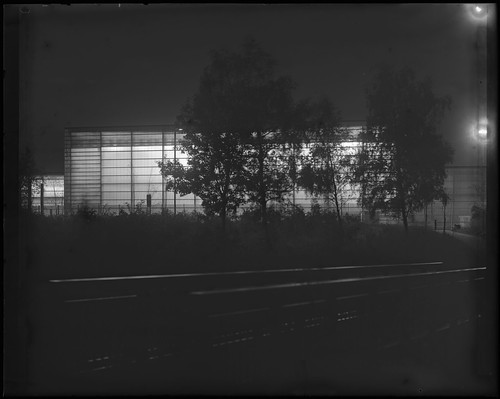 |
| Ilford FP4 Plus in medium format rollfilm, 35mm and large format sheet film |
FP4 Plus is Ilford's fine-grained medium speed complementary to
HP5 Plus. Ilford introduced emulsions at different times in different formats, and according to the product index in
Silver By The Ton, the earliest emulsion given the name
Fine Grain Panchromatic appeared as sheet film in 1930, rated 30 ISO, with rollfilm formats following in 1935, and glass plates in 1937. The name FP4 was first used for glass plates in 1955, with the full name
Fine Grain High Speed Panchromatic and a speed rating of 160 ASA (post 1960 revision in film speeds), although according to
Photomemorablia this was
not the same emulsion as the film version, available from 1968. The rollfilm FP4 emulsion was rated 125 ISO, which it remains
to this day in its current 'Plus' iteration, introduced in 1990. (There was also an FP Special glass plate introduced in 1949, with a speed of 80 ASA). FP4 Plus is currently available in 35mm, 120, and numerous sheet film sizes.
In my post on
HP5 Plus I wrote that it had been the default black and white film for me at one point, and, partly due to the kind of photographs I used to take, I tended not to use films slower than 400 ISO. This was the case for many years (when I didn't have access to a darkroom I mainly used Ilford XP2), until I returned to developing films myself. Subsequently, using Rodinal as a film developer has led me to be a little more discerning over my choice of the films due to its effects on grain, and, although I still use HP5 often, I started using FP4 around the same time.
FP4 Plus has many characteristics similar to HP5 Plus: although it is slower and finer grained, the film still possesses good latitude, and, as a traditional cubic-type emulsion, it has a similar look. The Ilford
FP4 Plus technical information sheet gives a recommended range of meter settings from 50-200; it also gives development times for 'accidental exposure' at 25 and 400 EI with a couple of specific developers (on the
Massive Dev Chart, there are ratings from 25-1000 EI, depending on the developer used). I've only developed FP4 Plus with Rodinal, and usually at box speed (although with my
Olympus Pen EE3 half frame camera, I like the look of the film with a slight push to 200 EI). Using Rodinal, particularly in 35mm, the results I've usually liked best are those at higher dilutions, mostly at 1:50, but also I particularly like FP4 when
stand developed in Rodinal diluted at 1:100. Additionally, I usually develop at sightly lower temperatures than the standard of 20ºC as this also has a bearing on the appearance of grain. With the exception of the first example below (a demonstration print made for a black & white film photography introduction), the rest of the images are scanned from the negatives.
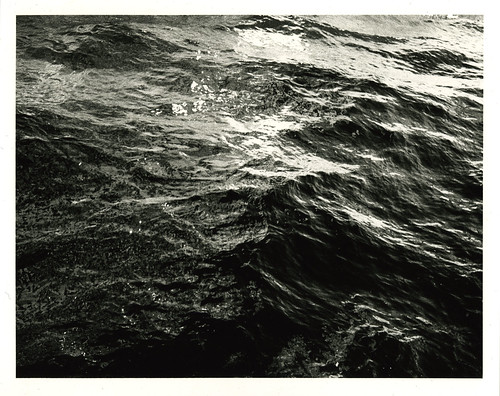 |
Ilford FP4 Plus (35mm half-frame), rated 200 EI, developed in Rodinal 1:50, 25 minutes at 18ºC.
Scan from print on Ilford MGIV RC. |
 |
| FP4 Plus (35mm), developed in Rodinal 1:50, 18m30s at 18ºC. |
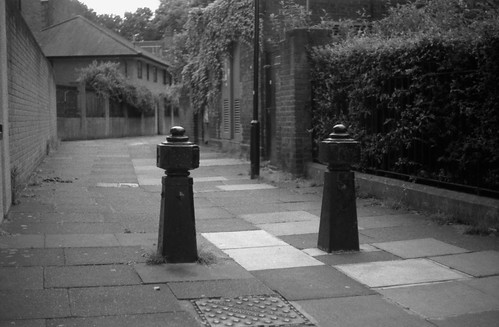 |
| FP4 Plus (35mm), developed in Rodinal 1:25, 10 minutes at 19ºC. |
 |
| FP4 Plus (6x9 medium format), shot at box speed, developed in Rodinal 1:50, 18m30s at 18ºC. |
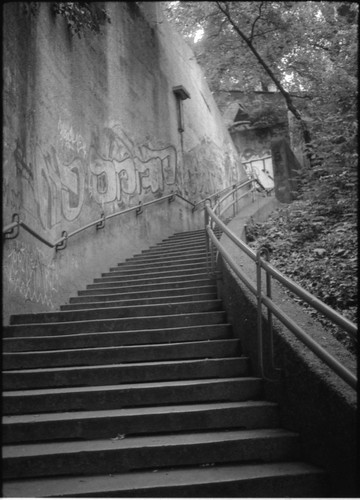 |
| FP4 Plus (35mm half-frame), shot at 200 EI, developed in Rodinal, 1:50 |
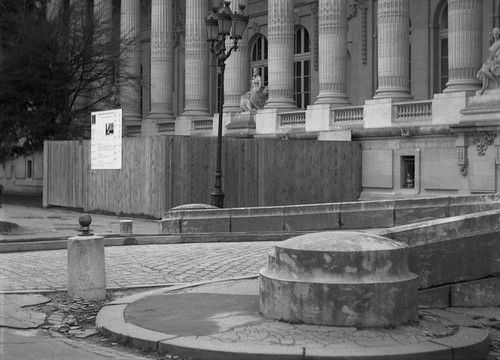 |
| Grand Palais, Paris; FP4 Plus (6x4.5cm medium format), rated 125 ISO, developed as 200 EI in Rodinal, 1:50, 24m45s at 18ºC |
Sources
Silver by the Ton - A History of Ilford Limited 1879-1979, RJ Hercock and GA Jones
www.ilfordphoto.com
http://www.photomemorabilia.co.uk/Ilford/Chronology.html

